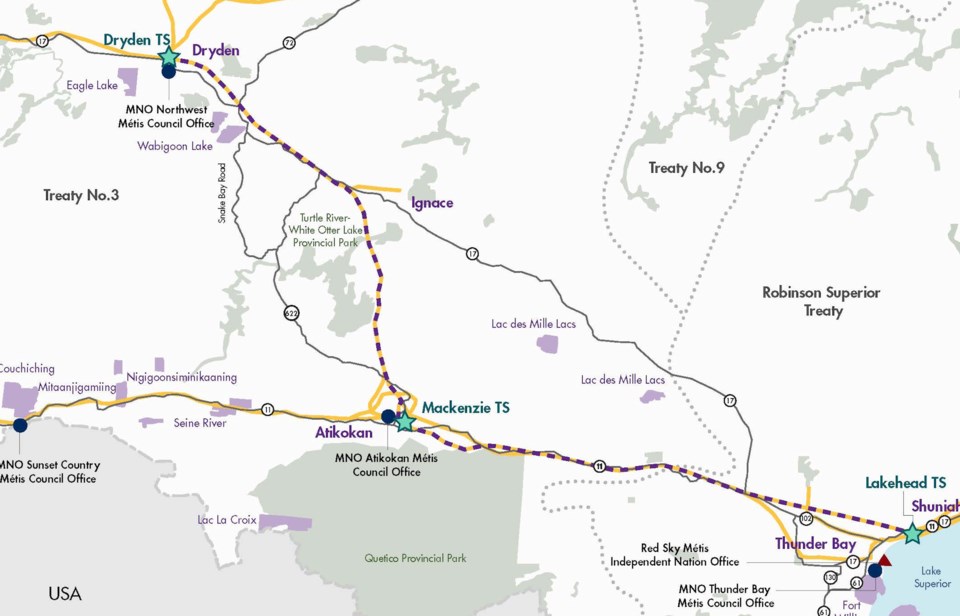THUNDER BAY — A critic of Hydro One's plan to construct a new high-voltage transmission line through properties in the Kaministiquia area says some residents will fight the utility right through the expropriation process if that becomes necessary.
Michelle Hamer led the establishment of the Neighbours on the Line citizens' group with the goal of having the proposed Waasigan Transmission Line moved away from their properties.
But Hydro One ruled out their suggested alternate route in an announcement Tuesday, saying it has numerous disadvantages compared with the utility's preferred route, which substantially parallels an existing transmission line between Thunder Bay and Atikokan.
Hamer called the decision disappointing but not unexpected.
"The part that we struggle with is that they consistently keep walking forward with their agenda when we realized immediately that their criteria numbers were not even calculated properly," she said.
Hydro One produced a side-by-side evaluation of the two routes using four criteria — natural environment, Indigenous values, socio-economic environment and technical/cost.
According to Hamer, the utility's graphs were faulty.
"This is just indicative of the consistent misrepresentation of the actual value points of this entire project ...They're not calculated appropriately," she said. "It speaks volumes to government overreach, it speaks volumes to the calibre of the corporations that taxpayers are paying in to. I would suggest if they don't even have their criteria numbers lined up correctly, that's an incredible liability for the whole project at large."
Neighbours on the Line believes more weight should be given to the direct impact on homeowners in the Kam area, where Hamer said the population is now much more dense than in 1967 when the existing transmission line was built.
She estimated that about 50 per cent of residents in the area have not yet agreed to the Waasigan project.
"We still have a unified body of landowners, and you only need one to say 'We're gonna sit here. You can expropriate if you want. But we're not moving.' And we have more than one."
Hamer believes it could take more than two years to complete the expropriation process.
To meet the anticipated growth in demand for electricity in Northwestern Ontario, the province's Independent Electricity System Operator has recommended that the section of transmission line between Thunder Bay and Atikokan be in service by the end of 2025.
"It will go to court. I don't see how it's not going to go to court ... I guess we're just going to push it to the max, and delay and delay and delay. I mean, who doesn't want a Finnish sauna/fishing hut blockade? If we have to do a blockade to let the rest of Canada know that we are not okay with this, I guess that's what we'll have to do," Hamer said.
She said offers of support and expertise have come in from other parts of Ontario, and "we're just going to keep going forward...to build an appropriate front against this type of encroachment."
Michelle Hamer represents Neighbours on the Line, a group of property-owners along the route of the Waasigan Transmission Line through Kaministiquia
(Carl Langdon/TBT News)




